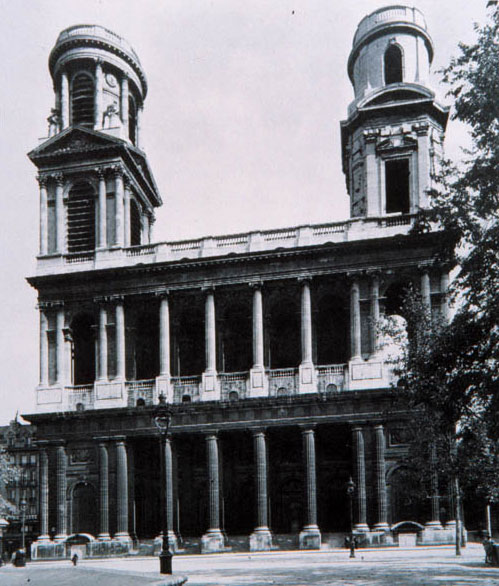 The Paris church of Saint Sulpice has played a role in the Mystery of Rennes-le-Château ever since Gérard de Sède made mention of it in his book, l’Or de Rennes also called Le Trésor Maudit, in 1967. We now know he was prompted by Pierre Plantard. Les Dossiers Secrets, deposited in the French National Library between 1964 and 1967 also make mention of St. Sulpice several times. The direct connection with Saunière is that according to De Sède, Saunière visited the Seminary of St. Sulpice in Paris to have the parchments he allegedly discovered in his church deciphered. Its claimed that Bishop Billard sent him there and covered his expenses. At St. Sulpice, it is said, Saunière, through intervention of Director Victor Bieil met Emile Hoffet (his cousin) who indeed deciphered the texts for him.
The Paris church of Saint Sulpice has played a role in the Mystery of Rennes-le-Château ever since Gérard de Sède made mention of it in his book, l’Or de Rennes also called Le Trésor Maudit, in 1967. We now know he was prompted by Pierre Plantard. Les Dossiers Secrets, deposited in the French National Library between 1964 and 1967 also make mention of St. Sulpice several times. The direct connection with Saunière is that according to De Sède, Saunière visited the Seminary of St. Sulpice in Paris to have the parchments he allegedly discovered in his church deciphered. Its claimed that Bishop Billard sent him there and covered his expenses. At St. Sulpice, it is said, Saunière, through intervention of Director Victor Bieil met Emile Hoffet (his cousin) who indeed deciphered the texts for him.
 Although this story is highly controversial and not substantiated by any evidence, the name of St. Sulpice comes back in many of the lines of research around the Mystery of Rennes-le-Château. There were strong ties between St. Sulpice, the Compagnie de Saint Sacarament, the Fouquet brothers and Notre Dame de Marceille. Some of Saunière’s best friends like Abbé Eugène Grassaud studied there. Also Louis de Coma studied at St. Sulpice. It features prominently in Dan Brown’s The Da Vinci Code.
Although this story is highly controversial and not substantiated by any evidence, the name of St. Sulpice comes back in many of the lines of research around the Mystery of Rennes-le-Château. There were strong ties between St. Sulpice, the Compagnie de Saint Sacarament, the Fouquet brothers and Notre Dame de Marceille. Some of Saunière’s best friends like Abbé Eugène Grassaud studied there. Also Louis de Coma studied at St. Sulpice. It features prominently in Dan Brown’s The Da Vinci Code.
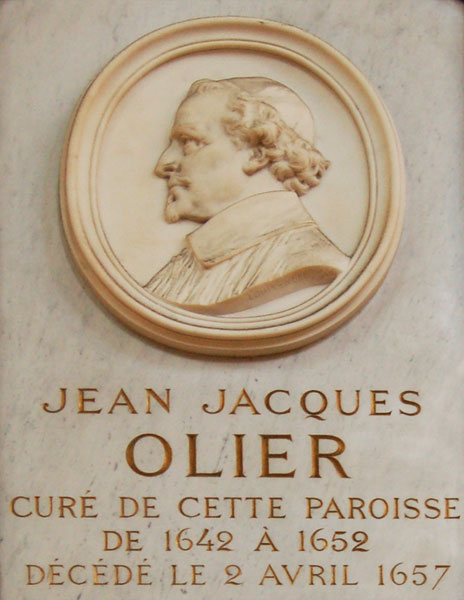 The Great Seminary of Saint Sulpice was founded by Jean-Jacques Olier, a pupil of Saint Vincent de Paul. He lived an exemplary Christian life. Like De Paul, Olier was a member of the legendary Compagnie du Saint Sacrament. Olier did a staggering amount of good works during his life. Central to his ideas was that the Christian Perfection was not only achievable for the clergy but for everybody who is prepared to lead a devout life in piety. Olier was a great organizer. He took his self proclaimed vocation of reviving religious life in France very serious and lived in poverty for many years devoting all the money that came in to making St. Sulpice into the leading national religious institution.
The Great Seminary of Saint Sulpice was founded by Jean-Jacques Olier, a pupil of Saint Vincent de Paul. He lived an exemplary Christian life. Like De Paul, Olier was a member of the legendary Compagnie du Saint Sacrament. Olier did a staggering amount of good works during his life. Central to his ideas was that the Christian Perfection was not only achievable for the clergy but for everybody who is prepared to lead a devout life in piety. Olier was a great organizer. He took his self proclaimed vocation of reviving religious life in France very serious and lived in poverty for many years devoting all the money that came in to making St. Sulpice into the leading national religious institution.
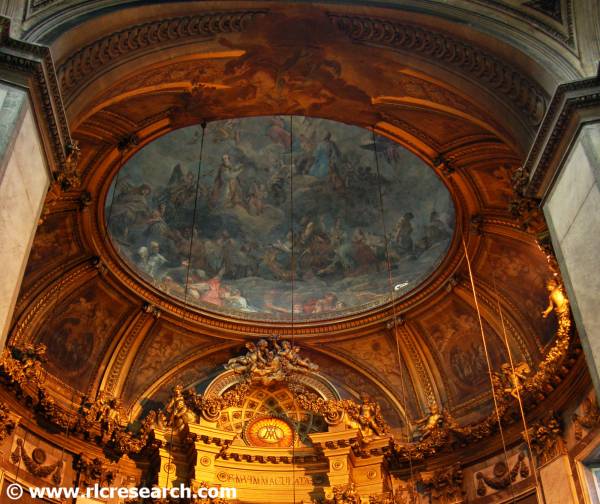 One thing for sure is that St. Sulpice is not your average church. The second largest church in Paris after the slightly larger, Notre-Dame, it is dedicated to Saint Sulpitious, the Pious., It’s a testament to the works of Olier and De Paul and an impressive signature for the seminary. The current, huge building was erected over a much smaller and older church. It was finished in its current state in 1733 with exception of the façade. The old church itself was built on the ruins of a Roman temple devoted to the Goddess Isis.
One thing for sure is that St. Sulpice is not your average church. The second largest church in Paris after the slightly larger, Notre-Dame, it is dedicated to Saint Sulpitious, the Pious., It’s a testament to the works of Olier and De Paul and an impressive signature for the seminary. The current, huge building was erected over a much smaller and older church. It was finished in its current state in 1733 with exception of the façade. The old church itself was built on the ruins of a Roman temple devoted to the Goddess Isis.
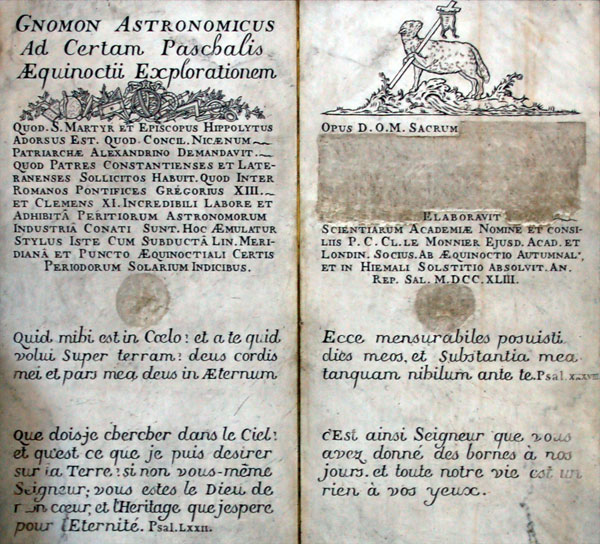 In 1737, father Languet de Gercy had a giant sundial installed. Officially only to be able to determine the exact date of Easter. It also stipulated more esoteric notion that the church was built on top of the old Paris Meridian. To represent this, a meridian line of brass was runs across the floor, ascending a white marble obelisk, nearly eleven meters high, at the top of which, sits a sphere surmounted by a cross. The contruction was done by the English astronomer Henry Sully. In the south transept window a lens was inserted. At noon on the winter solstice (December 21), the ray of light touches the brass line on the obelisk. At noon on the equinoxes (March 21 and September 21), the ray touches an oval plate of copper in the floor near the altar.
In 1737, father Languet de Gercy had a giant sundial installed. Officially only to be able to determine the exact date of Easter. It also stipulated more esoteric notion that the church was built on top of the old Paris Meridian. To represent this, a meridian line of brass was runs across the floor, ascending a white marble obelisk, nearly eleven meters high, at the top of which, sits a sphere surmounted by a cross. The contruction was done by the English astronomer Henry Sully. In the south transept window a lens was inserted. At noon on the winter solstice (December 21), the ray of light touches the brass line on the obelisk. At noon on the equinoxes (March 21 and September 21), the ray touches an oval plate of copper in the floor near the altar.
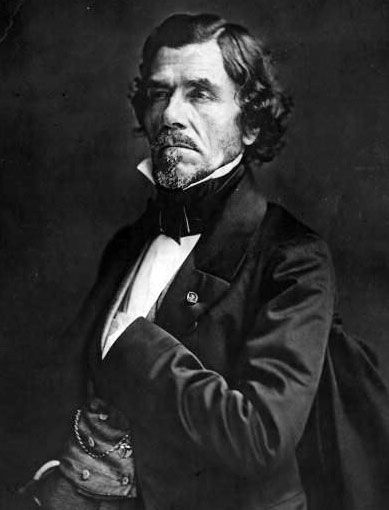 Between 1820 and 1875, the city of Paris asked 17 artists to redecorate the church, the most famous one being Eugène Delacroix. During the decoration some imagery was introduced in the church that, is claimed by some researchers to, contain clues of an esoteric or masonic nature. It concerns the two stoups, the inversed, texts, in the signature and Crucifixion, mural of Émile Signol and some oddities in two works of Delacroix in the Chapel of the Angels. The works of Delacroix in Saint Sulpice are commonly, considered as his spiritual testament, especially ‘Jacob fighting the Angel’.
Between 1820 and 1875, the city of Paris asked 17 artists to redecorate the church, the most famous one being Eugène Delacroix. During the decoration some imagery was introduced in the church that, is claimed by some researchers to, contain clues of an esoteric or masonic nature. It concerns the two stoups, the inversed, texts, in the signature and Crucifixion, mural of Émile Signol and some oddities in two works of Delacroix in the Chapel of the Angels. The works of Delacroix in Saint Sulpice are commonly, considered as his spiritual testament, especially ‘Jacob fighting the Angel’.

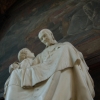
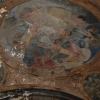
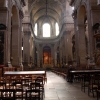
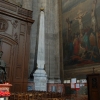
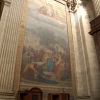
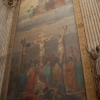
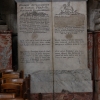
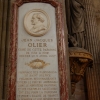
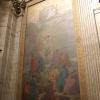
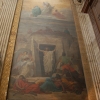
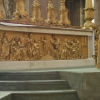
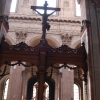

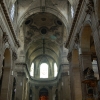
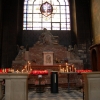
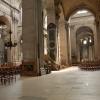
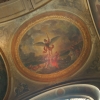
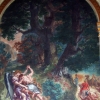
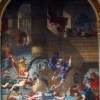
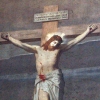

I visited St.Sulpice last summer. I’m not a fan of large, lavishly decorated churches, so from the moment I put my foot in there, I felt surrounded by architecture reminiscent of the oversized style of the Romans. I was intrigued by the oblisk, but it didn’t speak to me in any way, so I continued.
When I came to the chapel to Mary, I fell silent. I was overwhelmed by it’s beauty, and the serene sense of the feminine present there. The blurbs to the tourists said that the place was dedicated to the Virgin, but the more I looked the more references I found to Mary Magdalene. For one thing, she’s standing on a boat arriving on a wave. The windows all have the double M signifying the Magdalene, and from a cloud there are three childrens faces with angelwings. Her supposed three children were probably born after her arrival by boat at St.Marie-de-la-Mer.
Your article gave me another clue. The church has been built on top of an ancient Roman temple dedicated to Isis. The divine feminine has been honored there for thousands of years. No wonder the chapel seemed so alive to me. I connected with something thousands of years old.
I looked again at the symbol with the obelisk and the sphere with the cross on top. What if we separate them, and see them as the sceptre and the orb. Isn’t that the objects of power belonging to a King? Or Queen?
And aren’t they the symbols of male and female forces in balance? The Egyptians make several references to this. This is what we’re trying to figure out today, we’re looking for the balance again.
We need to make sure the sceptre and the orb have equal weight in the hands of the ruler.
Thanks for an excellent website.
Wencke.
http://marymagdalenesmessage.blogspot.com/